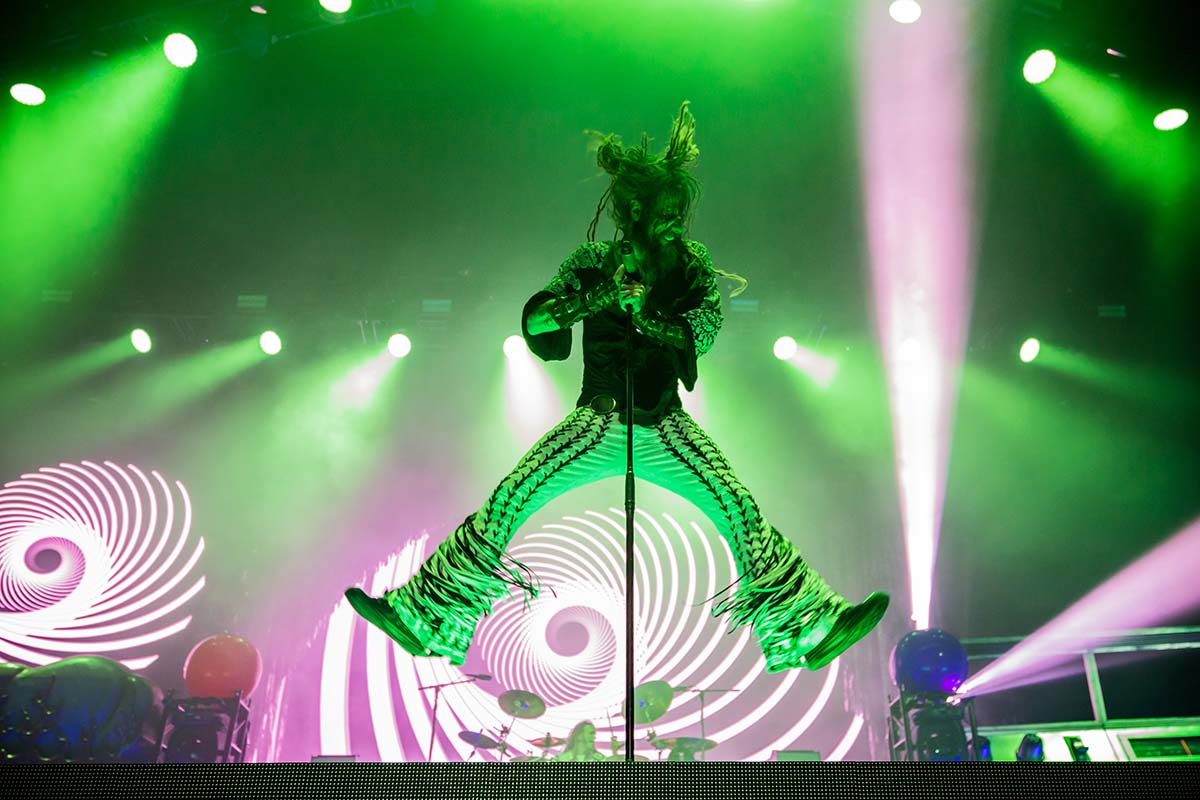How to Shoot Concert Images
Glenn Brogan heads into the photo pit with the Tamron SP 15-30mm VC lens to capture some of the world's best-known performers.
By Jenn Gidman
Images by Glenn Brogan
When Glenn Brogan was still in grade school, he made his first foray into photography with encouragement from his mom and uncle, and he's been peering through the viewfinder ever since. Today Glenn takes pictures in a variety of photographic genres, including wedding, family, and maternity imagery, but it was a 1989 PiL/New Order/Sugarcubes concert in Philly that set him on the path to his current bread and butter: concert photography. "I shoot a lot of nature photography as well, so I always say I shoot concerts until I can't hear, then I go out in nature until I can hear again," he says.
Glenn lives in Las Vegas, which he describes as a "concert mecca." "Right now, we have three 20,000-seat stadiums within a quarter-mile of each other, so lots of bands come here to play," he says. "I don't have to travel as much anymore to photograph concerts."
When he attends a musical performance, Glenn typically nabs a media pass and starts out in the photo pit with all of the other photographers. "You usually have just three songs in the pit to tell the story of the show, so you have to capture a variety of images," he says. "To start, you want to photograph each of the band members solo, followed by group shots. Then, once you get those main pieces down, you move on to more storytelling, whether that's crowd shots, detail photos of instruments, or lighting. But you really only have about 12 minutes to get everything, so you've got to work quickly."
The newest addition to his gearbag is the Tamron SP 15-30mm VC Wide-Angle lens. "I carry two bodies and two lenses: the SP 70-200mm VC and the 15-30," he says. "I get the best range with this duo. As for the 15-30, which I've had since last April, not only do I really appreciate the wide-angle capabilities when I'm shooting in these venues, but the images are also sharp corner-to-corner, the lens is quick to focus in low light, and the Vibration Compensation (VC) works wonders, because I always handhold—no tripods allowed in the photo pits."
Read on for some of Glenn's concert photography tips:
Take stage lighting into account.
Ninety percent of the lighting at a concert comes from behind the performers, as you can see in this shot of Kimi Recor, the lead singer for Draemings, an up-and-coming band out of California. Draemings actually was the opening band for the main act. If I'm not in the pit to shoot an opening band specifically, I'll test my gear to make sure everything's working properly before the main act comes on. But in this case I shot all three Draemings songs because the band was just phenomenal.
Being able to focus and frame your shot with all of that light coming in can be a challenge. Check your meter in the viewfinder and make sure you're not overexposing, because you can quickly blow out a shot with all of that light.
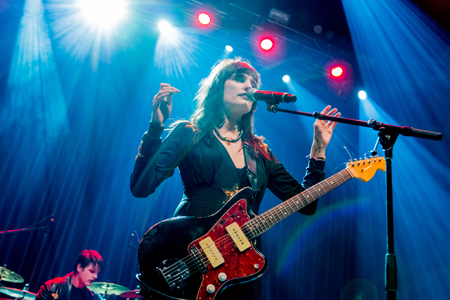
24mm, F/2.8, 1/200th sec., ISO 1600
Zoom in on facial expressions.
Music can be emotional, so capture that emotion the performers show onstage, as seen here in these photos of Richard Patrick, the lead singer for Filter, and John Rzeznik, the frontman for the Goo Goo Dolls. That said, when performers sing, they don't always make the greatest of faces. You want to capture the artist in the best light possible, not a bunch of images of them making weird faces that they won't be happy with.
What helps is that I study the bands before I head to a concert. I'll look up live performances on YouTube and other social media to check out which side a performer holds her mic on, how animated she is onstage. I previsualize where I want to be in the pit so I can make sure I get photos without a mic in the artist's face. This is especially important if I don't know the band. I want to see how many people are on the stage and how they perform, whether they're chaotic or mellow.

Filter: 30mm, F/2.8, 1/200th sec., ISO 3200
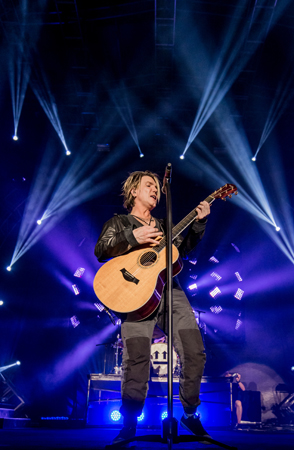
Goo Goo Dolls: 15mm, F/2.8, 1/800th sec., ISO 800
Capture the crowd.
In between songs, the house will sometimes bring up the lights and allow you to turn around to photograph the crowd. For this image of Orgy, I really wanted to show the band with the light show that was happening as they played. But I wanted to show the crowd, too, so I ran to the side of the stage and back so I could capture some of the folks watching the show, too. Having that 15-30mm lens for width was key to capturing this image and getting a full view of what was going on inside the venue.
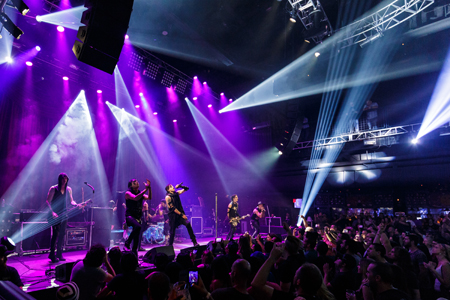
17mm, F/2.8, 1/160th sec., ISO 3200
Prepare for action shots.
Rob Zombie is one of my favorite performers. I've seen him a handful of times since I first photographed him in 1995. He's very animated and jumps around a lot. That means I have to anticipate what he's going to do while he's performing, which is something I've picked up on from photographing him multiple times and studying him.
What also helps: I usually shoot with my right eye looking through the viewfinder, but with my left eye open so I can see what's going on. I can tell if a guitarist is going to jump off of a bass drum or, in this case, if Rob Zombie is about to use the mic stand to push himself up into a jump. This technique also helps when people are crowd-surfing. I can see out of the corner of my eye if I'm about to get kicked in the head or neck, which has actually happened before.
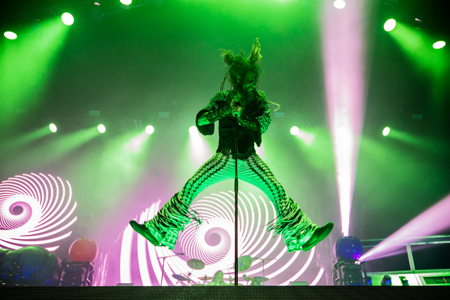
17mm, F/2.8, 1/400th sec., ISO 800
Tap into the wide-angle capabilities of the 15-30 to get everything you need in your images.
I use my 70-200mm when I'm shooting from the sides or at the soundboard after I've been down in the photo pit. But when I'm in the pit itself, I need a lens that's really wide like the 15-30. It's essential to make sure I capture the entire instrument or performer, like Sugar Ray's Mark McGrath, shown here during the Summerland tour. I hate when I see photos where the neck of the guitar or the performer's fingers are cut off; using the 15-30 ensures that doesn't happen. It also has the versatility to zoom in a bit, which is helpful.
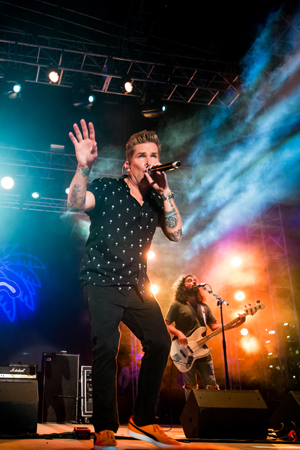
30mm, F/2.8, 1/200th sec., ISO 1600
Getting all of the performers into the frame was also critical during a concert for a band that has always been on my bucket list: Duran Duran, which I finally photographed for the first time last July. They're an iconic band, and seeing them in a sold-out 20,000-seat arena is an experience that can't be replicated. The photo here is of bass player and co-founder John Taylor and guitarist Dominic Brown. Being in the pit next to these guys and being able to get full-body shots with the 15-30 was incredible.
Because they're a big-name band, they also had terrific lighting at the show, and I really had to tone down my shots because of this. I have a start setting of ISO 1600 and 1/200th of a second for concert photography, but I had to back it way down because there was so much light. I ended up taking this photo at 1/400th of a second at ISO 800; The fact that I was at F/2.8 gave me just enough depth-of-field to get both performers sharp and in focus all the way through; you can still read the detail in the drum kit as well. It's one of my favorite shots with that lens.
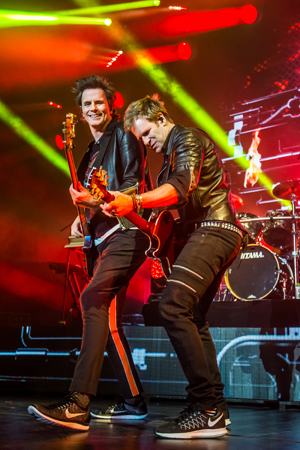
26mm, F/2.8, 1/400th sec., ISO 800
